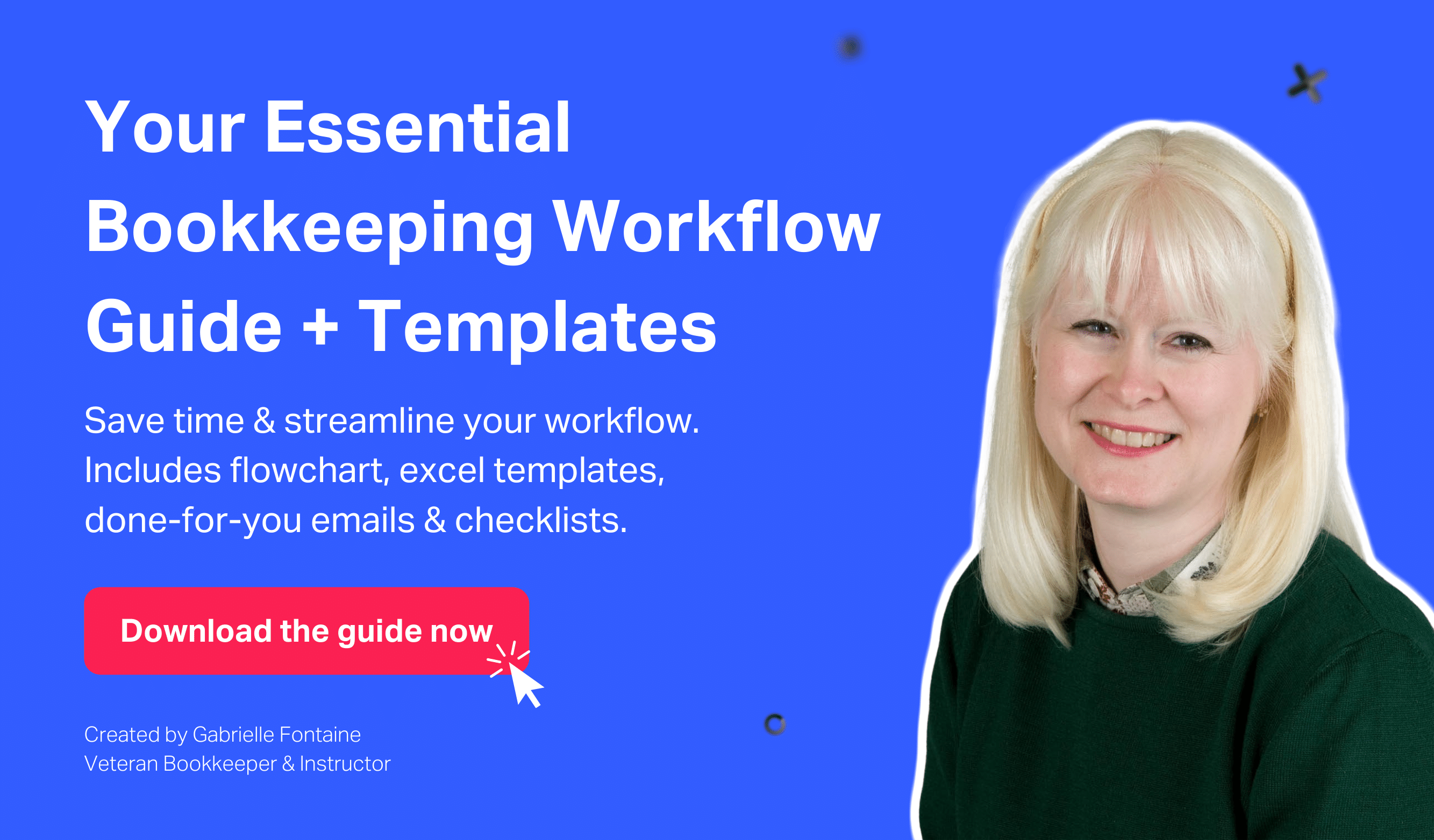Asana for bookkeepers and accountants: Is it the right fit for your firm?
Want to know whether asana for bookkeepers and accountants is the right tool to use? We've weighed in to share our thoughts...
Learn all about the benefits of accounting workflow software and how it can save you time, help you take control of your deadlines, and streamline your processes.
Why should you use accounting workflow software?
I know, great question right? Well, before we can answer, let’s start by taking a couple of steps back...
If you answered yes to any (or all) of those questions, keep reading...
There are so many reasons why accounting workflow software can be a game-changer when it comes to saving time, taking control of your deadlines and delivering work in a timely manner.
But understanding how it all works and making a decision to use one can sometimes be challenging.
That’s why we’ve put this guide together. To help you understand exactly what problems workflow software can solve in your firm, why you should consider using it, and the questions to ask yourself when evaluating it.
Let’s jump in…

Let’s start things off by identifying what it is.
Accounting workflow software enables you to organize your tasks & deadlines, and streamline the processes needed to complete those tasks on time.
It lets you see what tasks are due and when, as well as the exact steps (subtasks) that you need to work through in order to complete that task consistently.
With accounting workflow software, you’ll also be able to generate and access reports which will allow you to get an instant overview of what’s in progress, what’s overdue, what’s waiting on clients and what hasn’t been started yet.
Accounting workflow software works by letting you add and configure tasks & subtasks. Groups of these tasks and subtasks are called workflow templates, and these templates represent your process from start to finish for a particular task.
For example, you might provide monthly bookkeeping to your clients. This service will likely be broken down into many tasks that take part throughout the month (which will largely be the same for most of your clients). By turning this into a workflow template, you and your team will have the same process to follow every month, increasing your efficiency and consistency of work.
Different apps also offer you plenty of additional features. For example in some apps you can have the option to:
Accounting workflow software is used by firms of all shapes and sizes to help take control of tasks, deadlines and processes.
Whether you’re just starting to map & build your workflows, or you’re currently using spreadsheets or tools like Asana to manage your workflow, there are many advantages to using it.
Let’s take a look at those...
Do you ever get that feeling when you finish work for the day, close your laptop, go to spend time with your family and suddenly your mind starts racing with thoughts…
“What did I forget to do today?”
“Did that client ever respond to my email from 2 days ago?”
“I wonder if Sarah has finished reconciling that account so that I can get started with sending the client reports?”
Switching off from your business can be difficult at times. With good accounting workflow software in place, you can rest-easy knowing that everything you need to know about upcoming, ongoing and overdue work is all in one place.
Not only does accounting workflow software make it easier to keep track of what’s going on, it also helps you to find answers to some of the following questions:
With reports that provide answers to these questions you can start to increase the efficiency and timeliness of your work.
If using accounting workflow software does one thing for you, it will be to save you time.
Being able to login and see exactly what steps you and your team need to follow will help to increase your productivity and reduce the mental energy needed to keep thinking “what’s next?”.
Not only that, by having emails & files integrated into your workflow software, you’ll save time from the need to jump between different apps.
When it’s just you, it’s easier to maintain higher work quality.
But as your team grows, the consistency of work will start to decline.
One way to ensure your consistency stays as high as possible is to have clearly defined workflows and processes for your team to follow. This will make it easier for everyone to work together to get the work done more effectively and timely.
This one is really the culmination of everything else above…
If you’re able to deliver work:
Then it’s highly likely that your clients will receive their reports in a timely manner.
That’s why accounting workflow software not only benefits your firm internally, but also enhances your clients experience and satisfaction.
A big factor to consider when choosing your accounting workflow software is whether or not there is an email integration.
Email is still the primary communication method for accounting & bookkeeping firms and their clients, which is why it needs to be an integral part of your accounting workflow software.
An email integration will allow you to:
Do you find yourself spending hours each month sending nagging reminders to your clients to send you information? By choosing accounting workflow software with an email integration you can automate these emails to go out at any stage of your workflow.
There’s no doubt that your clients will email you with requests. Keeping these requests and questions in your inbox means that it’s easy for them to fall through the cracks. Choosing accounting workflow software that allows you to turn adhoc emails into tasks will mean that you never miss a client request again!
When you’re in the middle of completing work for a client, the last thing you want to be doing is jumping between apps to try and find the email they sent you with the information you need on it. The search might only take a few minutes, but multiply that time by all of your clients, and it’s a huge time drain. That’s why choosing an accounting workflow software with integrated emails means that everything you need to complete the job is right there, without needing to jump between apps.
Ok, accounting workflow software is worth looking into. But, as we mentioned, there are many to choose from. What’s the best way to decide? There are a few key factors to take into consideration.
Accounting workflow software is something that you and your team will be using on a daily basis.
This means that its usability and ease of use are essential so you don’t waste a lot of time keeping it up to date.
If your workflow software is clunky, cumbersome and hard to navigate, your team will resist using it and the information will become outdated, which will make it difficult to accurately keep track of tasks and deadlines.
Cost is always a factor when it comes to choosing new technology (especially with the number of new apps coming onto the market all the time).
That’s why choosing accounting workflow software that is affordable now (and when you grow) is important.
Try to find tools that avoid the ‘per-user’ pricing model that increase in cost as you grow your team. Look for tools with a simple, straightforward monthly fee instead.
Also consider ‘what else’ your accounting workflow software can do and the additional costs this can save you. For example, if it has built in document portal and storage, this could save you from spending on a separate document management app.
Accounting workflow software is just one part of your overall tech stack.
That's why you want it to integrate with your other apps, if at all possible. The goal is a congruent, overall system that supports your practice's needs.
Ideally, you want your apps to have direct integrations. But if that's not available, choosing workflow software that works with a Zapier integration is your next best option. That means that your workflows can be triggered by actions in other apps e.g. a proposal being accepted in Practice Ignition.
The main goal is to streamline your overall end-to-end process as much as possible so you can start to scale your practice.
There are many great workflow tools available for accounting & bookkeeping firms including Jetpack Workflow, Aero Workflow & Pixie.
So how does Pixie stack-up for small accounting & bookkeeping firms looking to take control of their work and save time?
When using Pixie, not only will you be able to automate tasks, and create automated email templates to make your communication more efficient. You’ll even be able to:
Because of its simple user interface and ease-of-use, you can get your first tasks and templates set up in Pixie in minutes.
We even have a dedicated workflow template library to help get you started.

Choosing the right accounting workflow software can sometimes feel like a big decision, but there’s no doubt that it will greatly benefit your accounting firm.
Remember, the key factors to bear in mind when selecting your accounting workflow software are:
And before we go, don’t forget – if you’re looking for some accounting workflow software that ticks all of those boxes, then get in touch with us.

ABOUT THE AUTHOR
A Portuguese expat in London, Celso founded Pixie after learning first-hand about the challenges faced by small accountancy and bookkeeping practices. A product-focused leader with over 20 years experience in the software industry, at Pixie you'll frequently find him listening to customers and distilling their feedback into the product and go-to-market strategy.
Want to know whether asana for bookkeepers and accountants is the right tool to use? We've weighed in to share our thoughts...
Explore Pixie strategies to enhance productivity and empower their staff to work smarter. Learn practical techniques and tools that can help you...
Ever since the 1970's, email has been slowly taking over our lives... Even today, with all of the innovative and unique means of communication at our...
Join our announcement list and keep up to date with all of the great things coming to Pixie.